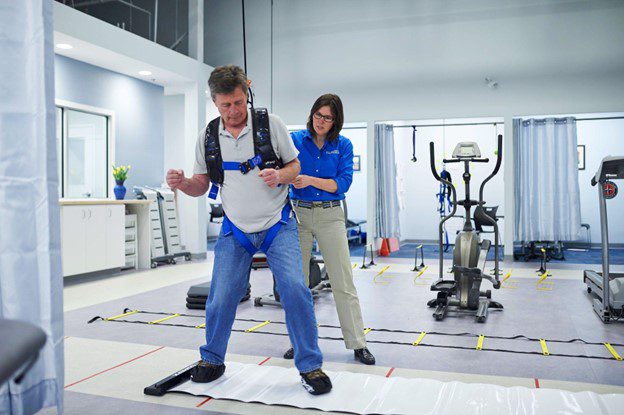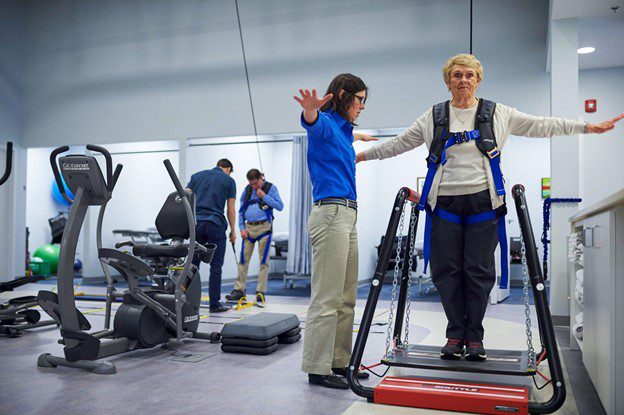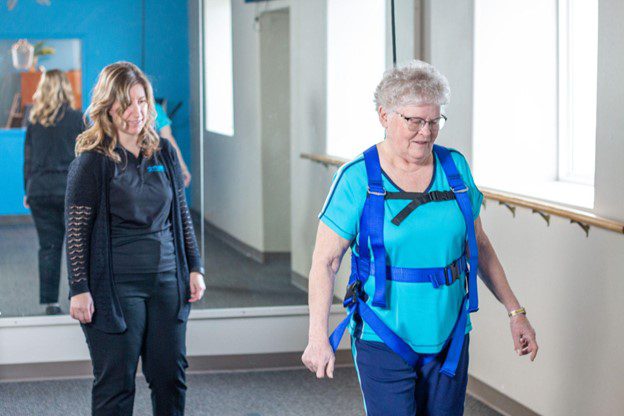5 Expert Strategies to Reduce the Fear of Falling This Fall Prevention Month

Each September, Fall Prevention Month highlights one of the most pressing issues facing older adults and patients in rehabilitation: falls. According to the CDC, falls are the leading cause of injury among older adults, with one in four people over 65 experiencing a fall each year. But beyond the physical injuries, another challenge often lingers long after a fall occurs: the fear of falling.
This fear can be just as limiting as the fall itself. Patients may withdraw from activities, avoid exercise, or lose confidence in their ability to move safely. Unfortunately, this inactivity weakens muscles and balance, ironically increasing the likelihood of another fall. The good news? Therapists and caregivers can use proven strategies to help patients overcome this fear, improve their mobility, and rebuild confidence.
In honor of Fall Prevention Month, here are five expert strategies to reduce the fear of falling and empower patients to move forward safely.
1. Start with Comfortable Exercises and Progress Gradually

A key to reducing the fear of falling is helping patients build trust in their own abilities. Starting therapy with safe, simple exercises provides a foundation of success before moving on to more complex tasks.
Why this approach works:
- Builds confidence step by step.
- Reduces the risk of overwhelming or discouraging patients.
- Creates a sense of safety while still promoting progress.
Examples of gradual progression:
- Begin with seated movements (seated marches, ankle circles).
- Progress to supported standing activities, like sit-to-stand transfers or standing heel raises.
- Slowly introduce dynamic tasks such as stepping over objects or side-stepping.
- Use measurable outcomes like timed stands, step counts, or distance walked to show improvement.
Small victories add up. By reinforcing progress in manageable increments, patients develop confidence and a willingness to take on bigger challenges.
2. Focus on Balance Training

Fear often stems from the sensation of being unsteady. Improving balance directly addresses this root cause, giving patients greater control of their movements.
Why balance training reduces fear of falling:
- Strengthens stabilizing muscles.
- Improves reaction times.
- Enhances body awareness and coordination.
Effective balance strategies:
- Static balance: Standing on one foot with hand support.
- Dynamic balance: Walking heel-to-toe across a line.
- Weight shifting: Practicing controlled movements side-to-side or forward and backward.
- Dual-task training: Combining movement with mental tasks to mimic real-life distractions.
- Functional balance: Navigating obstacles, bending to pick something up, or turning in place.
By focusing on balance, patients not only reduce fall risk but also build the confidence that they can move without hesitation.
3. Make Therapy Fun and Engaging

The fear of falling can create tension, which ironically increases the risk of imbalance. Making therapy enjoyable helps patients relax, stay motivated, and associate movement with positive outcomes.
Why engagement matters:
- Enjoyable sessions reduce anxiety.
- Motivation leads to consistency, which accelerates progress.
- Patients are more willing to attempt challenging activities when they’re fun.
Ideas to increase engagement:
- Turn balance drills into interactive games or obstacle courses.
- Incorporate music to encourage rhythmic movement.
- Vary routines with resistance bands, foam pads, or therapy balls.
- Align activities with personal interests, like dance-inspired exercises or sports drills.
- Celebrate small achievements with praise or recognition.
When therapy feels engaging, patients shift focus away from fear and toward enjoying their progress.
4. Encourage a Positive Mindset

The fear of falling is not just physical; it’s also psychological. Patients who constantly worry about falling may move cautiously, stiffly, or avoid activity altogether. Cultivating a positive mindset helps patients break free from this cycle.
Why mindset matters:
- Negative thinking reinforces fear and hesitation.
- Positive reinforcement improves self-efficacy, leading to better outcomes.
- Confidence fuels progress, even when physical ability is still developing.
How to build a positive mindset:
- Highlight progress: Use before-and-after comparisons to show improvement.
- Reframe setbacks: Normalize challenges as part of the rehabilitation process.
- Encourage positive self-talk: Replace thoughts like “I’ll fall again” with “I’m stronger every day.”
- Set realistic goals: Small, achievable goals provide constant wins.
- Involve caregivers: Family encouragement extends positivity beyond the clinic.
Shifting the focus from fear to ability helps patients embrace therapy with confidence and resilience.
5. Use Fall Prevention Equipment Like the Solo-Step

Even with strong exercises and a positive mindset, many patients still hesitate to attempt challenging movements because of the underlying fear of falling. This is where safety equipment changes everything.
The Solo-Step Overhead Track and Harness System is designed to completely remove the risk of falling during therapy. Patients wear a harness attached to an overhead track, allowing them to practice walking, balance, and even higher-level activities without the danger of hitting the ground.
Benefits of the Solo-Step system:
- Provides patients with the security to attempt more difficult exercises.
- Prevents falls and injuries during therapy sessions.
- Gives therapists peace of mind, reducing the need for constant guarding.
- Encourages more dynamic, real-world practice such as turning, navigating obstacles, or even jogging.
- Builds independence by shifting focus from fear to movement.
By eliminating the physical risk, Solo-Step allows patients to overcome the mental barrier of fear, often accelerating recovery and improving outcomes.
Moving Forward with Confidence
This Fall Prevention Month, it’s important to remember that preventing falls isn’t only about strength and stability; it’s also about overcoming the fear of falling. When patients are empowered to move safely and confidently, they reclaim independence and quality of life. By starting with manageable exercises, prioritizing balance training, keeping therapy fun, fostering a positive mindset, and utilizing fall prevention equipment like Solo-Step, therapists can provide patients with both safety and confidence.
Progress is built step by step, and every fall prevented is a step toward a healthier, more independent future for your patients.